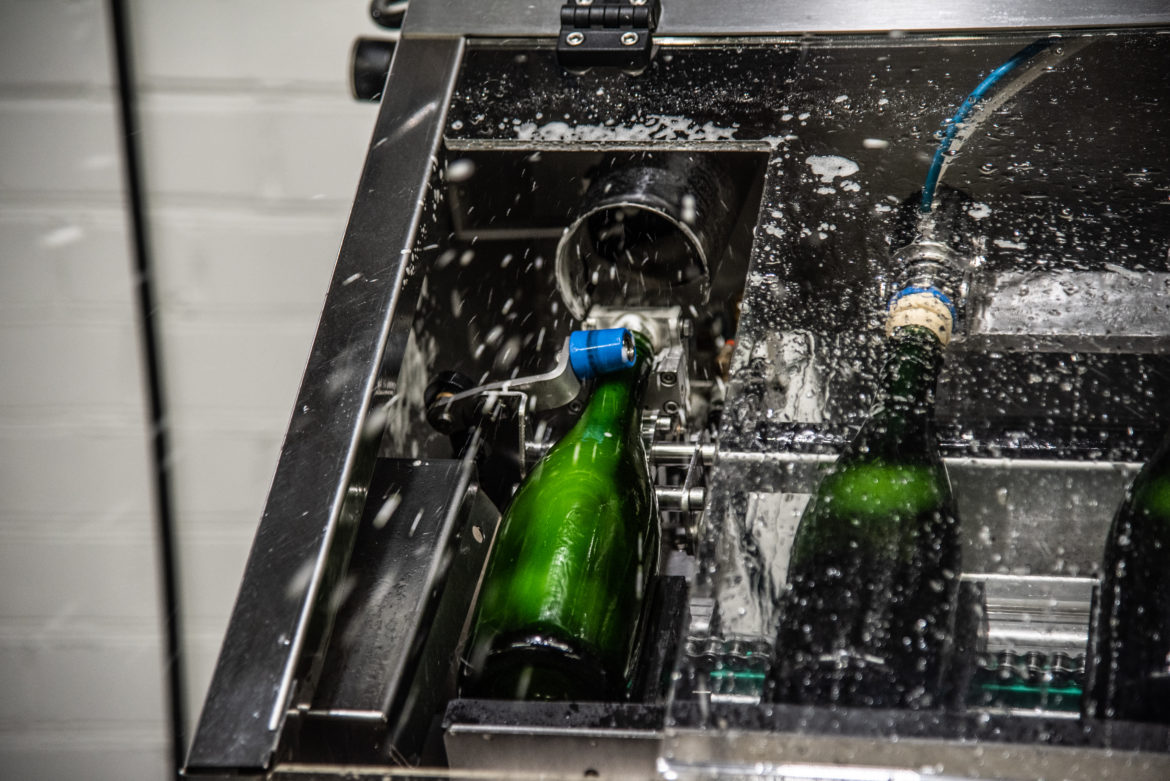The Mag
Everything you need to know about champagne disgorgement!

Disgorging is an essential step in champagne-making. It consists of removing the deposit that the stirring has concentrated in the neck of the bottle. Once performed by hand, it has evolved over time but is still amazing. Explanation on this crucial handling.
The art of
disgorgement
After spending years in the heart of the champagne cellars, the bottles have had plenty of time to develop their effervescence, which is known as “prise de mousse“. They also underwent the stirring, which consists in regularly turning them by a quarter, always upside down. But this long resting time and this handling cause the …. yeast deposit that naturally forms in the neck to slide out. To preserve all the qualities of the wine, it is necessary to eliminate these sediments and deposits, through the famous disgorging stage. This method consists of placing the neck of the bottle in a cooling bath at about -25° for 10 to 15 minutes. An ice cube forms and traps the deposit. When the bottle is opened, the natural internal pressure expels the ice cube and carries away all the deposits with it.
The opened bottle,
what's the next step?

The disgorging stage causes a slight loss of wine that is filled with the liqueur d’expédition or liqueur de dosage. It is mainly composed of old reserve wines and very pure sugar. The liqueur de dosage is adapted to each cuvée with a specific sugar concentration for each of them, from theExtra brut, the least sweet, to the Doux champagne, the most dosed in sugar (50 grams of sugar per litre). The bottle is then corked and capped.
The importance
of the date
The slow ageing of the champagne on the deposits of fermentation for many years before disgorgement influences the freshness and complexity of the aromas, which change to more jammy notes of dried fruit. These great champagnes for ageing offer an assertive contrast between a very complex nose and a great freshness in the mouth.
How do I know when my champagne
has been disgorged?
Disgorgement is sometimes (but not always) mentioned on the back label. If it is a millesime, this additional mention allows the champagne lover to know how much time the champagne has spent ageing on its deposits, that is to say the time elapsed between the beginning and the end of the champagne-making process. An important mention to better understand the intrinsic quality of a good bottle.
“On the go” method
versus "on ice” method
Traditionally, the disgorging was carried out “on the go” by the winegrower who learned to pull out the cork quickly. The pressure led to the evacuation of the deposits, all that remained was to control the clarity of the wine. This handiwork has given way to a more efficient and less risky “on ice” disgorgement. However, some traditional houses still cultivate this ancient method, often for the disgorgement of exceptional cuvées or vintages.
After this stage, the bottles are then rested in the cellar before flying to new destinations where they will be served all over the world.
These articles may be of interest to you

Knowledge
What is the composition of champagne?
The answer could be simple, champagne is made of grapes. But the different transformations that take place during the elaboration of champagne make…

Lifestyle
Winter is here? Champagne!
Oh yes! Winter is here, it’s really here. This season is like no other, switching from one temperature to another in a single…




